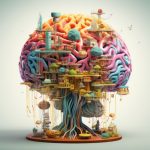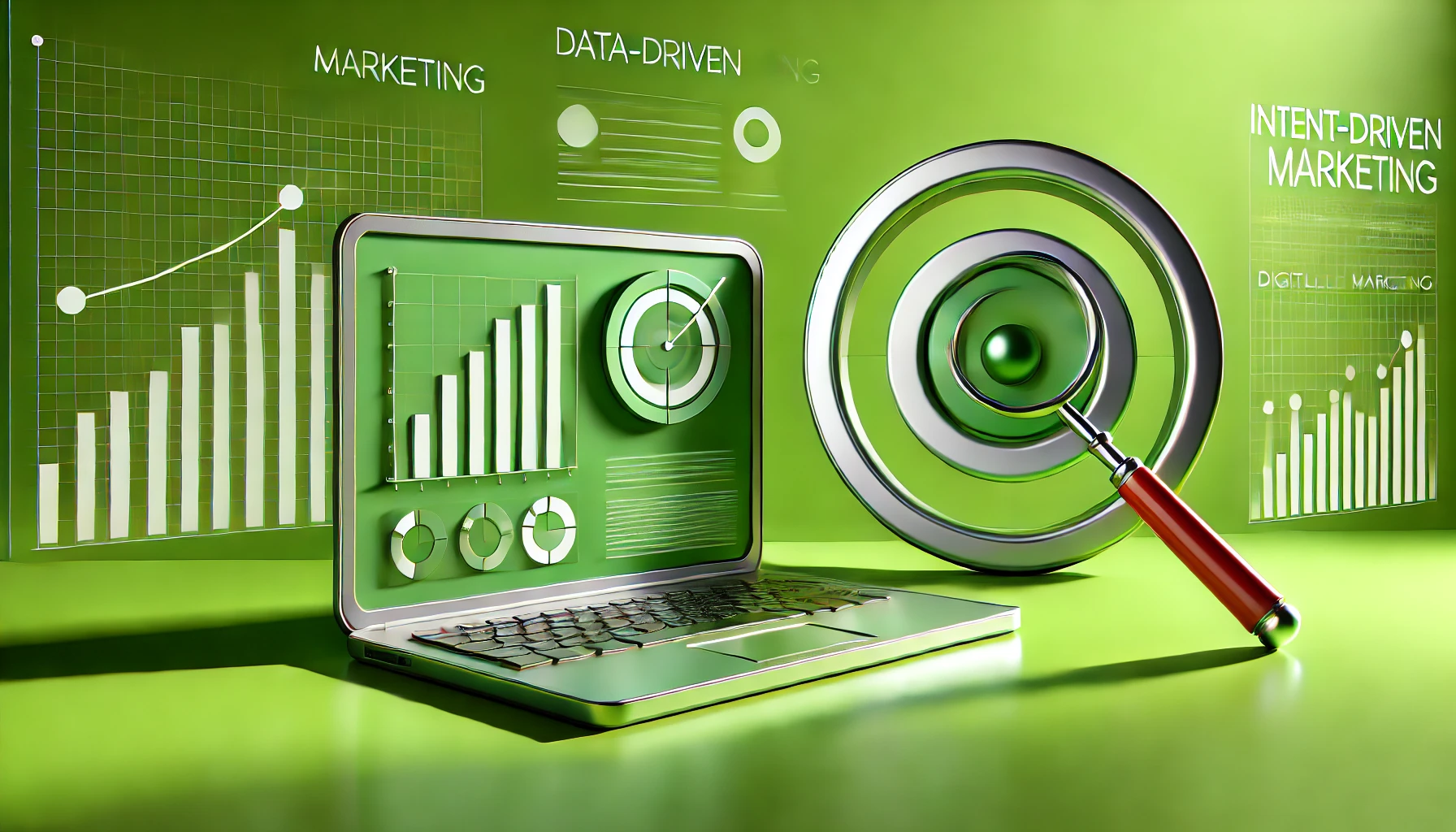In the ever-evolving realm of digital marketing, success hinges on capturing and retaining the attention of an audience overwhelmed by a deluge of online content. To stand out in this highly competitive landscape, marketers have increasingly turned to the understanding of human behavior and psychology. One of the most intriguing and impactful intersections in this domain is the relationship between neuroscience and digital marketing.
The significance of this synergy cannot be overstated. As the digital realm continues to expand and diversify, businesses and brands constantly seek new and innovative ways to engage, persuade, and convert users.
In this pursuit, the brain becomes the final frontier for marketers, offering insights into why individuals click on certain ads, share specific content, or make purchase decisions online.
In this article, we will embark on a fascinating journey into the world of neuromarketing, exploring the profound impact of neuroscience on digital marketing.
We’ll delve into the inner workings of the human brain, shedding light on the cognitive and emotional processes that underpin decision-making. From there, we’ll unveil how these neurological insights can be applied to create more effective digital marketing campaigns.
Our roadmap for this exploration is as follows:
- The Power of the Digital Landscape: In this section, we’ll set the stage by discussing the dominance of digital marketing and the challenges marketers face in grabbing users’ attention. We’ll introduce the idea that understanding the human brain can be a game-changer for digital marketers.
- The Brain’s Role in Decision-Making: The brain plays a central role in decision-making. We’ll delve into the emotional and cognitive processes that guide our choices, introducing key concepts like the limbic system and prefrontal cortex.
- Cognitive Biases in Digital Marketing: We’ll explore various cognitive biases that influence consumer behavior and how these biases can be harnessed for marketing campaigns. Ethical considerations surrounding their use will also be discussed.
- Emotional Triggers and Storytelling: Here, we’ll focus on the emotional triggers used in marketing, such as fear, joy, and nostalgia. We’ll delve into the role of storytelling in evoking emotions and building connections with brands.
- The Visual Appeal: The visual element in digital marketing is essential, and we’ll explain the psychology of color, design, and imagery in capturing users’ attention. Practical tips for creating visually appealing content will also be provided.
- Neuromarketing and Data Analytics: The emerging field of neuromarketing, which employs neuroscience to optimize marketing strategies, will be introduced. We’ll also discuss the role of data analytics and A/B testing in refining campaigns based on user responses.
- Ethical Considerations in Neuromarketing: Ethics in neuromarketing is a crucial topic. We’ll highlight the ethical concerns associated with this practice and the industry standards and regulations in place to ensure responsible marketing.
- Practical Applications for Digital Marketers: In the final section, we’ll offer practical insights and recommendations for digital marketers to implement the insights gained from neuroscience. Real-world case studies will illustrate the successful application of these principles.
As we journey through these sections, we will uncover the profound influence of the brain on digital marketing and equip marketers with the tools and knowledge to create more impactful and ethical campaigns. Let’s begin our exploration of the neuroscience of clicks in the world of digital marketing.
Section 1: The Power of the Digital Landscape
The evolution of marketing has witnessed a remarkable transformation over the past few decades. Traditional advertising methods, such as billboards, television commercials, and print media, have taken a backseat as digital marketing has surged to the forefront.
The emergence of the internet and the proliferation of smartphones have ushered in an era where the vast majority of consumer interactions and transactions occur online.
In this section, we will explore the evolution and dominance of digital marketing, the challenges that marketers face in this landscape, and the idea that understanding the human brain can revolutionize their approach.
1.1 The Evolution of Digital Marketing
Digital marketing is not just a marketing channel; it’s an entire ecosystem that encompasses a broad spectrum of strategies and tools. It has its roots in the early days of the Internet when businesses began to recognize the potential of online advertising.
From the humble beginnings of banner ads and email marketing, digital marketing has evolved into a complex, multi-faceted discipline.
Today, digital marketing encompasses a wide range of channels, including search engine optimization (SEO), social media marketing, content marketing, pay-per-click advertising, email marketing, influencer marketing, and more.
The rise of e-commerce platforms and online marketplaces has made it easier than ever for businesses to reach global audiences with their products and services.
1.2 The Challenges of Capturing and Retaining Attention
With the rise of digital marketing, a new set of challenges has emerged. The internet is a crowded space, and users are bombarded with an overwhelming amount of information and advertisements daily. Marketers face the formidable task of capturing and, even more importantly, retaining the attention of their target audience.
One of the primary challenges is ad blindness. Users have become adept at ignoring or avoiding ads, whether through ad-blockers or simply through learned behavior. Banner blindness, where users automatically tune out standard ad formats, is a prime example. This forces marketers to seek more creative and compelling ways to engage their audience.
Furthermore, the “scrolling culture” that defines digital consumption means that marketers have only a few seconds to make an impression and convince users to stay. The speed and ease of scrolling on social media feeds, for instance, create a constant battle for attention.
1.3 The Brain as a Game-Changer for Digital Marketers
To overcome the challenges of the digital landscape, marketers are increasingly turning to the science of the human brain. Understanding the brain’s inner workings can provide marketers with a deeper insight into what captures and sustains attention.
The brain, as the control center for all human actions, plays a pivotal role in shaping consumer behavior. By tapping into the brain’s cognitive and emotional processes, marketers can create content and campaigns that resonate on a profound level.
For example, understanding how emotions influence decision-making or how cognitive biases affect perception can inform strategies that resonate with users and drive engagement.
In essence, this article will demonstrate that the fusion of neuroscience with digital marketing has the potential to be a game-changer, offering marketers an innovative edge in a fiercely competitive landscape.
By decoding the mysteries of the brain, digital marketers can craft more compelling, persuasive, and engaging campaigns that not only capture but also retain users’ attention.
As we continue our journey through the intersections of neuroscience and digital marketing, we will uncover how these insights can be practically applied to create successful campaigns.
Section 2: The Brain’s Role in Decision-Making
Understanding the brain’s role in decision-making is pivotal in unraveling the secrets of successful digital marketing. In this section, we will delve into the intricacies of how the human brain influences choices, with a focus on both emotional and cognitive processes.
We’ll introduce key brain regions, such as the limbic system and prefrontal cortex, and emphasize the significance of emotions in decision-making, which has direct relevance to marketing strategies.
2.1 The Brain’s Decision-Making Machinery
The brain is a remarkable organ responsible for regulating numerous aspects of our daily lives, including the choices we make. Decision-making is a complex cognitive process that involves a delicate interplay between various brain regions. At its core, this process can be broadly categorized into two main components: emotional and cognitive.
- Emotional Processes: Emotions play a vital role in decision-making. The limbic system, a set of interconnected brain structures, is primarily responsible for emotional processing. It includes the amygdala, hippocampus, and the limbic cortex. The amygdala, in particular, is central to the brain’s emotional response system. When individuals make decisions, emotions often guide their choices. For example, feelings of trust, fear, happiness, and excitement can heavily influence how a decision is reached.
- Cognitive Processes: Decision-making also involves cognitive functions. The prefrontal cortex, located in the frontal lobes of the brain, is a key player in this regard. It is responsible for higher-order cognitive functions, such as reasoning, planning, and evaluating the consequences of actions. The prefrontal cortex helps individuals make rational, well-informed decisions by weighing various options, considering consequences, and applying logic.
2.2 The Role of Emotions in Decision-Making
“Emotions are a driving force behind many of our decisions.”
They color our perceptions, shape our preferences, and even lead us to take certain actions. This emotional influence can be profound in marketing. When consumers interact with advertisements or products, their emotional responses often dictate whether they choose to engage or make a purchase.
For instance, a heartwarming and emotionally resonant story about a brand’s journey can evoke feelings of trust and connection. Similarly, a fear-inducing message about a potential problem that a product or service can solve may drive a sense of urgency and action.
By understanding how the brain processes emotions, marketers can intentionally craft content that triggers the desired emotional response.
In the context of digital marketing, emotional appeal can be harnessed through various means, such as compelling storytelling, the use of imagery, and the selection of colors that elicit specific emotions.
Understanding the interplay between the limbic system and emotional responses equips marketers with the ability to create campaigns that resonate on a deep emotional level.
In summary, the human brain is a complex decision-making engine, influenced by both emotional and cognitive processes. The limbic system, with its emotional center, and the prefrontal cortex, with its rational thinking capabilities, work in tandem to guide choices.
Emotions, in particular, play a pivotal role in decision-making and are of utmost relevance to digital marketing. Marketers who understand these processes can leverage this knowledge to create content and campaigns that connect with their audience on a visceral level, driving engagement and conversion.
In the subsequent sections of this article, we will explore how marketers can practically apply these insights to their digital marketing strategies.
Section 3: Cognitive Biases in Digital Marketing
Cognitive biases are fascinating quirks of the human mind that influence our perceptions, judgments, and decisions. In the context of digital marketing, understanding these biases is essential as they can be harnessed to create more persuasive and effective campaigns.
In this section, we will explore various cognitive biases, their impact on consumer behavior, and how marketers can use them to their advantage while also addressing the ethical considerations associated with their use.
3.1 What Are Cognitive Biases?
“Cognitive biases are systematic patterns of deviation from norm or rationality in judgment, often occurring as a result of mental shortcuts or heuristics that the brain uses to simplify complex information processing.”
These biases are inherent to human thinking and can lead individuals to make decisions that may not always align with logical or rational conclusions.
Recognizing these biases and how they operate is a crucial step for digital marketers seeking to influence consumer behavior.
3.2 Cognitive Biases and Consumer Behavior
Cognitive biases can significantly influence consumer behavior and impact their interactions with digital marketing efforts. Some of the most relevant cognitive biases in digital marketing include:
- Confirmation Bias: People tend to seek out information that confirms their existing beliefs and ignore information that contradicts them. In marketing, this bias can be harnessed by framing your product or service in a way that aligns with your target audience’s pre-existing beliefs or preferences.
- Anchoring Bias: This bias occurs when individuals rely too heavily on the first piece of information encountered (the “anchor”) when making decisions. Marketers can use this by presenting a higher-priced option first, making subsequent options seem more reasonable in comparison.
- Scarcity Bias: The fear of missing out can be a powerful motivator. By emphasizing limited quantities or time-limited offers in marketing campaigns, you can trigger the scarcity bias, prompting consumers to act quickly.
- Bandwagon Effect: People tend to follow the actions or beliefs of the majority. By showcasing the popularity of your product or service through social proof (e.g., customer reviews or testimonials), you can leverage the bandwagon effect.
- Decoy Effect: Introducing a less attractive option to make another option seem more appealing is a classic marketing strategy. This exploits the decoy effect, as consumers are more likely to choose the option that is relatively better in comparison.
- Loss Aversion: People tend to prefer avoiding losses over acquiring equivalent gains. By framing a product or service as a solution to potential losses (e.g., financial security or peace of mind), you can tap into this bias.
3.3 Ethical Considerations in Exploiting Cognitive Biases
While cognitive biases can be powerful tools in digital marketing, their use raises ethical considerations. Marketers must strike a balance between persuasion and manipulation.
“Ethical marketing practices involve transparency, honesty, and respect for the autonomy of consumers.”
Manipulating cognitive biases to deceive or coerce consumers is both unethical and damaging to a brand’s reputation.
The responsible use of cognitive biases in digital marketing entails:
- Communicating the benefits and limitations of a product or service.
- Avoiding false or misleading claims.
- Respecting consumers’ decision-making autonomy.
By adhering to ethical guidelines, marketers can harness the power of cognitive biases while maintaining trust and credibility with their audience.
In summary, cognitive biases are inherent to human decision-making and play a pivotal role in consumer behavior. Marketers can leverage these biases to create persuasive and effective digital marketing campaigns.
However, it is essential to approach their use ethically, ensuring that transparency and honesty are at the forefront of all marketing efforts.
In the following sections of this article, we will explore the emotional triggers and storytelling techniques that can complement the understanding of cognitive biases to create compelling digital marketing campaigns.
Section 4: Emotional Triggers and Storytelling
Emotions are a powerful driving force in human decision-making and behavior. In the realm of digital marketing, tapping into these emotions through storytelling can create a deep and lasting connection with the audience.
In this section, we will explore the significance of emotional triggers and storytelling in digital marketing, their impact on consumer behavior, and how marketers can effectively incorporate them into their campaigns.
4.1 The Power of Emotional Triggers
Emotional triggers are specific stimuli that evoke emotional responses in individuals. These triggers can be harnessed to create a profound connection between a brand and its audience. Emotions can range from joy and excitement to fear and nostalgia, and each emotion can be strategically used to drive consumer engagement and action.
- Joy and Happiness: Evoking feelings of joy and happiness can create a positive association with a brand or product. This emotional trigger is often used in advertisements to showcase the benefits and pleasures associated with a product or service.
- Fear and Urgency: Fear is a potent emotion that can drive consumers to take action. Marketers often use fear-based triggers to highlight potential problems that their product or service can solve, creating a sense of urgency.
- Nostalgia: Nostalgia can be a powerful emotional trigger, as it transports individuals back to fond memories and experiences. Brands can use nostalgia to create a sense of connection and sentimentality.
- Empathy and Compassion: Demonstrating empathy and compassion in marketing campaigns can connect with consumers on a deeper, emotional level. It shows that a brand understands and cares about its customers’ needs and concerns.
4.2 The Art of Storytelling
Storytelling is a fundamental human activity that transcends cultures and generations. It is a means of conveying information and emotional experiences in a narrative format. In the context of digital marketing, storytelling is a powerful tool to engage and resonate with the audience.
Effective storytelling involves:
- Creating a Narrative: Craft a compelling story that captures the audience’s attention and holds it from beginning to end. It should have a clear structure, including an introduction, conflict, and resolution.
- Relatability: Stories should be relatable to the target audience. They should reflect the challenges, desires, and experiences that the audience can identify with.
- Emotional Appeal: Stories should evoke emotions that align with the brand’s message or product. Emotional resonance is key to creating a lasting impact.
- Visual and Verbal Elements: The use of visuals, such as images or videos, can enhance the storytelling experience. Use both verbal and non-verbal elements to convey the narrative.
- Consistency: The brand’s message and values should remain consistent throughout the storytelling process. It should align with the emotional triggers the brand seeks to evoke.
4.3 Practical Applications in Digital Marketing
Practical applications of emotional triggers and storytelling in digital marketing include:
- Content Marketing: Crafting blog posts, articles, and videos that tell compelling stories related to the brand or product.
- Social Media Marketing: Using social media platforms to share stories that resonate with the target audience, including customer success stories and behind-the-scenes narratives.
- Email Marketing: Creating email campaigns that use emotional triggers and storytelling to engage subscribers and encourage them to take action.
- Video Marketing: Leveraging video content to tell impactful stories that connect with viewers on a personal level.
- Advertising Campaigns: Integrating emotional triggers and storytelling into ad campaigns to capture attention and drive conversions.
Incorporating emotional triggers and storytelling into digital marketing strategies not only helps build brand loyalty but also forges a genuine connection with the audience. When consumers emotionally connect with a brand, they are more likely to become loyal customers and advocates.
In summary, emotional triggers and storytelling are powerful tools in digital marketing that leverage the deep emotional responses of consumers. By effectively incorporating these elements into marketing campaigns, brands can create a lasting connection with their audience, influencing their behavior and driving engagement and conversions.
In the following sections, we will explore the visual appeal in digital marketing and the role of neuromarketing and data analytics in optimizing campaigns.
Stay tuned with our website designing company in Delhi to read the rest of the article, it’s definitely worth the wait.





